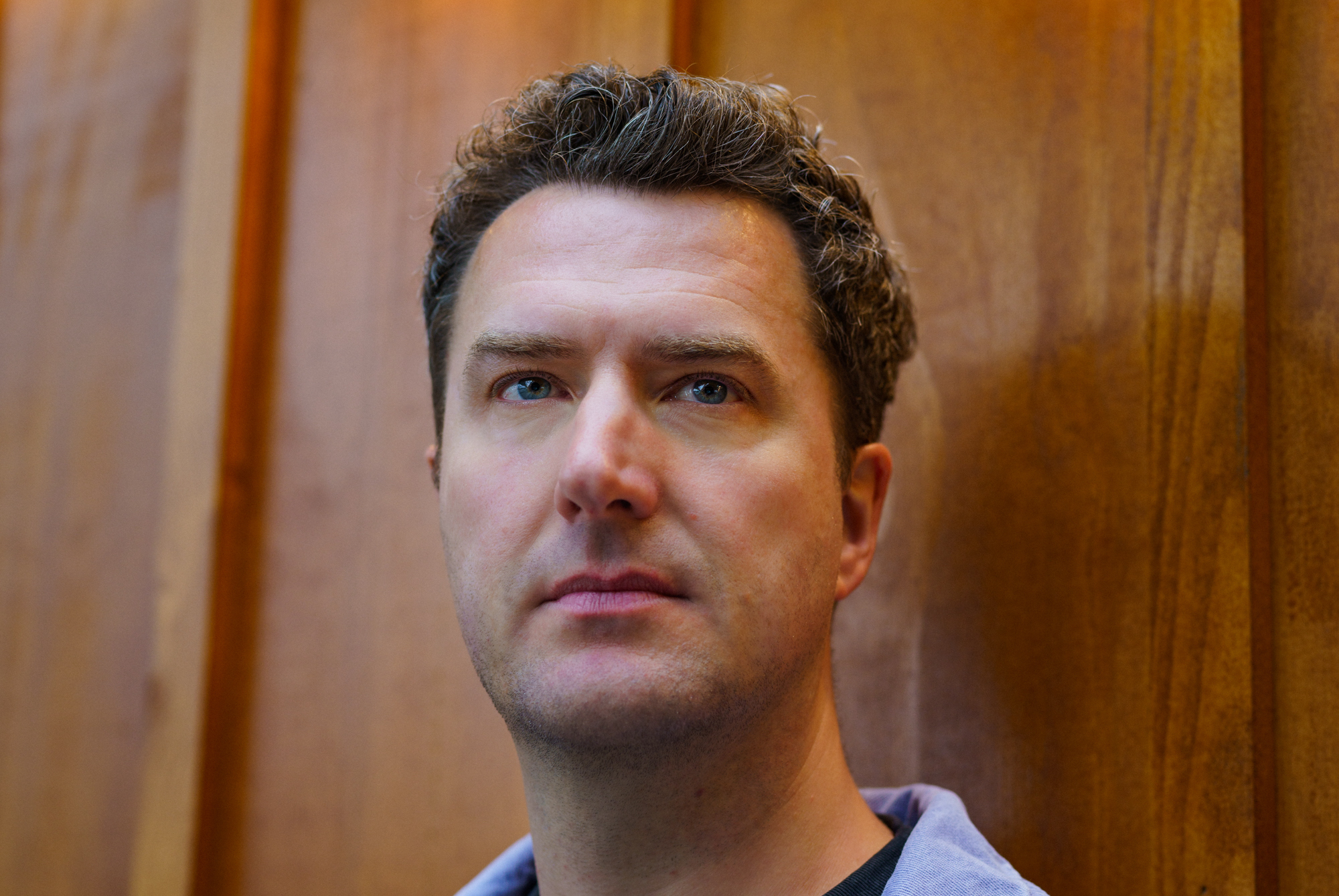The Music of Mark Bowden
by Steph Power
By the turn of the millennium, when the young Mark Bowden was discovering his passion for composition, the orchestra was thought by some to have had its day as a vehicle for innovative new music. Despite its continued importance for many composers, it seemed a problematic beast: unwieldy, expensive and, above all, freighted with outmoded cultural traditions. Yet fast-forward to 2016 and the orchestra has done more than survive. New generations of composers are being drawn to the opportunity it affords for creating large-scale structures which also satisfy at more intimate levels; to its enormous range of timbral and acoustic possibilities, to its sheer presence and the physical excitement of its sound en masse. Bowden has explored all these aspects and more, defying received wisdom to make the orchestra the nexus of his art to date.
Each of the four pieces on this disc (
Sudden Light) – three orchestral, one chamber – reflects Bowden’s questing musical mind and creative generosity. Together they trace a fruitful decade from 2005 to 2015, when Bowden completed a four-year residency with the orchestra of his home nation, the BBC National Orchestra of Wales. It was the earliest work – the RPS award-winning
Sudden Light (2005) – which first brought him to BBC NOW’s attention; initially via the then newly-appointed Principal Guest Conductor, Jac van Steen, who premiered the piece with the BBC Symphony Orchestra. The most recent,
Five Memos (2015), is for far smaller forces in violin and piano. It reveals Bowden’s equal ability to imbue once drawing-room ensembles with a drama writ large, embracing far-reaching literary and philosophical ideas.
From the start, Bowden’s outlook has been expansive and his inspiration diverse. Not just poetry and literature but mathematics, science and geopolitics nourish his work, and he is intensely curious about big questions concerning the origins of life and thought. But his music (including that for voices, not appearing here) resists overt descriptiveness or programmes. Rather, he seizes upon images which trigger musical connections. All kinds of ideas and often lateral associations are used to forge abstract building blocks in pitch and rhythm, timbre and underlying pulse. Dance – which Bowden first fell in love with as a boy, and which might have claimed him in another life – is never far away. Indeed, the two concertos featured here, composed for BBC NOW, are dance- related by usage or commission.
Lyra (2011) is a cello concerto, part of which was later choreographed for Ballet Black, whilst
Heartland (2012) is both a percussion concerto and a ballet score (for National Dance Company Wales).
All four pieces speak in some way to Bowden’s central artistic concern with what he calls “collaboration and communication”. He believes passionately in social and intellectual engagement; in a continuum between art, science and history through which layers and networks of meaning saturate the work in dynamic flux from surface to depth. Idiomatically, Bowden’s music owes much to modernist traditions in its dissonant- consonant, energetic drive and rigorous detail; to the early ‘Russian’ and late serialist Stravinsky in particular, but also to Messiaen, Varèse, Saariaho and many others, including his teachers Richard Steinitz, Julian Anderson and Philip Cashian. Like these latter in their different ways, Bowden inhabits a post-serial, spectral landscape revitalised by rhythmic impulses that are physically felt as well as sensed through formal processes. Complex but never arcane, his music speaks to a continuing modernity rather than notions of a supposed post-postmodern age.
Bowden’s first commission at BBC NOW was for a cello concerto. The title of the resulting
Lyra contains multiple references which embrace entire worlds of cultural and historical association originating in Philip Pullman’s trilogy of fantasy novels,
His Dark Materials. Foremost is what Bowden describes as the series’ “wild protagonist”, Lyra Belacqua, or Lyra Silvertongue. The cosmic war in which she becomes embroiled traverses philosophy, physics and theology: in his preface Bowden notes that the name ‘Lyra’ is also shared by a constellation of stars and a class of Russian nuclear-powered submarines. Coincidentally, ‘his dark materials’ is itself a phrase from Milton’s Paradise Lost; Bowden explores a musical link to the 17th century via the small bass – or ‘lyra’ – viol. The rich play and tumble of these ideas finds its counterpart in music of enormous energy, with a solo cello part that calls for a blistering technique. A densely textured, single-movement piece cast in three sections, with three main types of material, both ‘dark’ and ‘light’ in nature. These are juxtaposed and interwoven throughout: fibrillating high tessitura woodwind, strings and metallic percussion “reflects the luminosity of stars” in Bowden’s words, contrasting with fast and often low-pitched passages of great violence. Further song-like material draws upon 17th century viol tunings, and a coda features extreme scordatura for the soloist, who is required to de-tune their bottom C-string “as if crushed by the force of the material that has gone before”.
The culmination of Bowden’s BBC NOW residency was
A Violence of Gifts (2015): a secular cantata inspired by Haydn’s
Creation and conceived on a massive scale for chorus, orchestra and two solo singers. Following this mammoth undertaking, he found composing a piece for violin and piano “a tonic”. Yet here, too, Bowden’s intense engagement with deeper questions of art, culture and society shaped what is also, in its own way, a substantial and ambitious piece.
Five Memos attempts to articulate through music, key concepts of Italo Calvino’s influential final series of talks/essays, published posthumously – without the projected sixth essay – as
Six Memos for the Next Millennium. Bowden’s five movements are titled after Calvino’s surviving drafts, each advocating literary virtues which, in Calvino’s view, embody values crucial to the future of writing. For Bowden, these ideas excite precisely because they “could be applied to composing music or any art form”.
In musical terms, the richness of
Five Memos lies in the discursive interplay between violin and piano, which explore often widely contrasting material. In the opening ‘Lightness’, for example, the violin floats above driving, semiquaver rhythms in the piano, whilst the ensuing ‘Quickness’ explores the seeming contradiction of
festina lente, or ‘hurrying slowly’. ‘Exactitude’ is etched in the precision of a smooth, flowing violin melody over a disparate
vago – vague or wandering – piano. In ‘Visibility’, images and ideas are manifested against a backdrop of infinite, unrealised possibilities, whilst the final ‘Multiplicity’ takes up a tiny motif from the first movement to suggest an array of potentially unlimited networks of relationships between the two instruments.
Percussion is very important in Bowden’s orchestral music. He is sensitive to the manifold timbres of percussion instruments, and often uses them as structural indicators; marking changes of section or tempo, for example, and steering the underlying temporal pulses at points of acceleration or slowing down.
Heartland explores these functions and more, delighting in the sheer variety and subtlety of percussion and its rhythmic and melodic possibilities – as well as its inherent aural and visual drama. The piece is both a percussion concerto and a ballet score. Its title refers to a disquieting geopolitical theory put forward by Halford John Mackinder in 1904: that any totalitarian regime which came to command a posited ‘Heartland’ linking Europe, Asia and Africa would dominate the world. Three sections are linked by two
senza misura cadenzas in a single-movement form inspired by Escher’s ever-circling staircases. The whole is underpinned by two, very long, simultaneous
cantus firmi: one starts with extremely slow notes which gradually speed up, whilst its counterpart does the opposite. One of the most striking timbres is that of the aluphone; a new instrument comprising hand- moulded aluminium bells which broadly recall Tibetan and Indonesian gongs. The marimba is also featured in a ferociously intricate,
moto perpetuo display – and maracas which, in a trio of soloist and two orchestral percussionists, seductively open and close the piece.
The great thinker of the early German Enlightenment, Gottfried Leibniz, is credited with saying that “music is the pleasure the human mind experiences from counting without being aware that it is counting”. This insight about music, mathematics and consciousness – and its wider implications concerning the creative similarities between art and science – offers a vital clue to Bowden’s approach to composition;
Sudden Light is a direct response to it, inspired by mathematician, Marcus du Sautoy’s:
The Music of the Primes: Why an Unsolved Problem in Mathematics Matters (London, 2003). Bowden’s title comes from Dante Gabriel Rossetti’s poem of the same name. He quotes his first stanza in the score’s preface:
I have been here before,
But when or how I cannot tell:
I know the grass beyond the door, The sweet, keen smell,
The sighing sound, the lights around
the shore.
The role of the senses in memory and recognition is woven into the very fabric of the piece, which is derived structurally from sequences of prime numbers. These patterns are particularly important harmonically and texturally, where they give rise to what Bowden describes as “a shimmering aural tension” in the play of consonance and dissonance through the overtones of the harmonic series (including quarter tones in oboe, trombone and strings). Enormous expressive power is unleashed as the patterns develop and interweave through this turbulent, single-movement work. However, following Leibniz, they are not intended to be audible. Bowden also quotes du Sautoy, who describes prime numbers as “jewels studded throughout the vast expanse of the universe”, contending that they are “the most mysterious objects in the universe for it is impossible to predict when the next prime number will appear.”
© 2016 Steph Power


